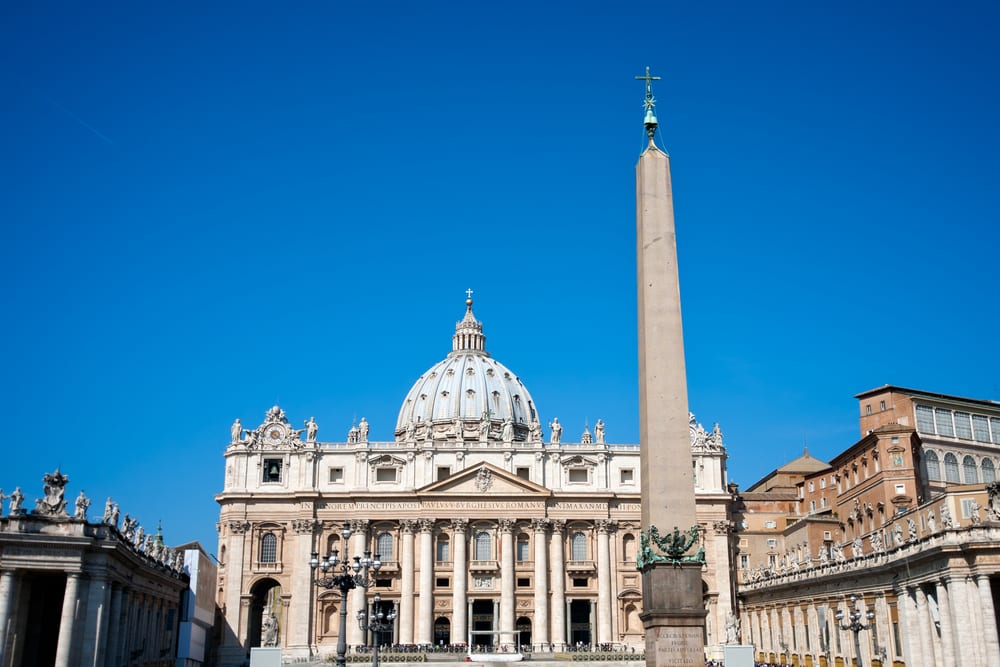
St. Peter’s Basilica: A Journey Through Art, Architecture & History
January 22, 2025
Table of Contents
ToggleWhy Visit St. Peter’s Basilica?
All the superlatives still don’t quite do justice to the vastness and grandeur of St. Peter’s Basilica. The most important, and arguably most magnificent church in Catholic Christendom took 120 years to build, 20 popes, and some 6 to 10 architects, depending on who’s counting.
It covers 5.7 acres of land and can fit roughly 60,000 people inside. It may or may not be built on top of the tomb of St. Peter (there has never been much compelling architectural evidence to support the belief). As an act of faith-based human achievement in architecture, it is utterly unparalleled.
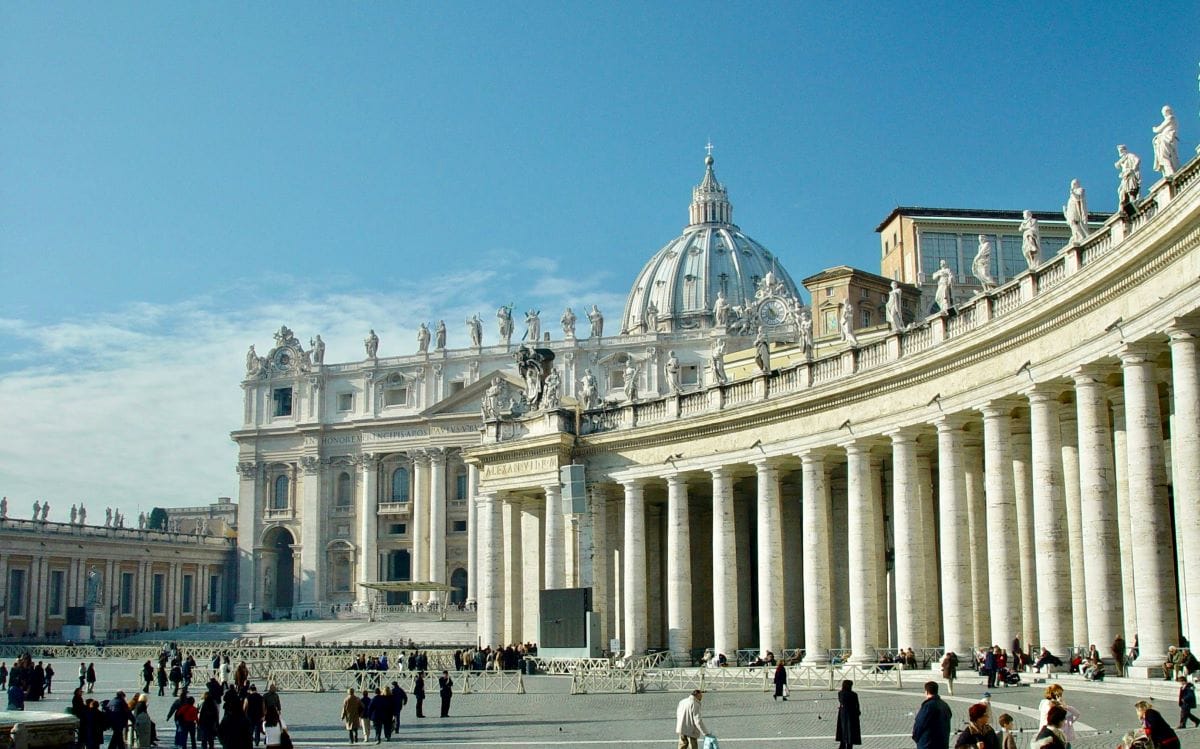
St Peter’s Square is one of the most visited places on earth. Photo credit: Arnold Straub
On top of this, it contains masterworks like Bernini’s baldachin and Michelangelo’s moving-to-the-point-of-tears sculpture, the Pietá. No other single building in the world captures the spirit of Catholocism quite like St. Peter’s.
Exploring St. Peter’s Basilica: Must-See Artworks Inside
The Architecture
The design for the colossal edifice of St. Peter’s Basilica was essentially the work of two men, Pope Julius II and his chosen architect, Donato Bramante (with grudging help from none other than Michelangelo). By knocking down an older basilica built on the site by Constantine in the 4th century, their ambition was to create nothing less than Christendom’s greatest building.
On paper, it was deceptively simple – a Greek cross with a dome on top inspired by the Pantheon. In reality it was the size of that cross that made the project exceptional. Although there are now churches that technically cover more ground than St. Peter’s Basilica, none have bettered its titanic interior capacity in the nearly 400 years since its completion.
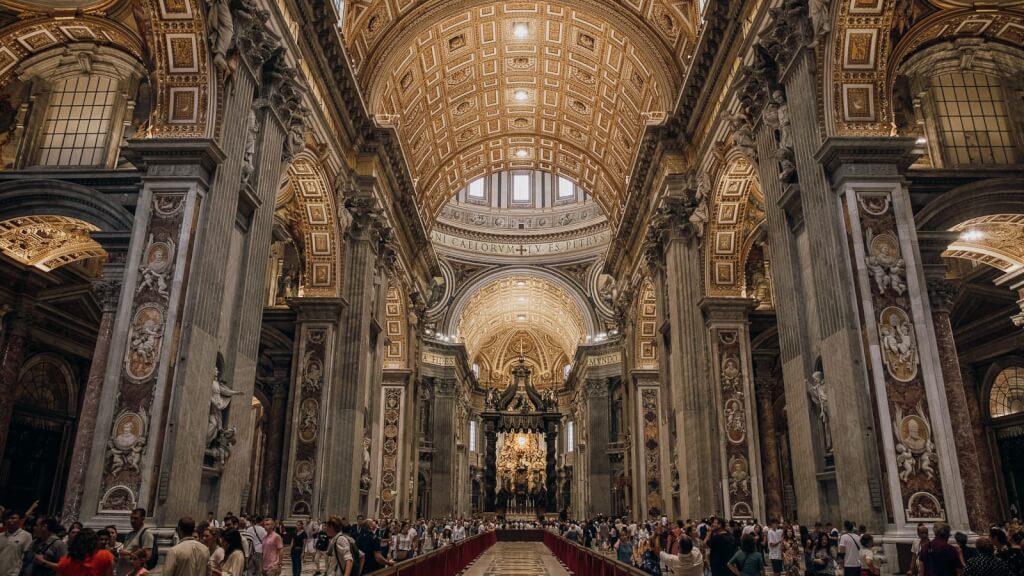
It is one of the few spaces in Rome where you can go at the height of tourist season and not feel the least bit crowded by your fellow man – at least up until the point that the crowd reaches 50,000 people or so.
The Dome
The dome of St. Peter’s Basilica is generally credited to Michelangelo. However, that’s not the whole story. In reality, Michelango took the job of head architect from Antonio Sangallo the Younger, who had taken over for Baldassare Peruzzi, who had taken over for Raphael, who had, in turn taken over from Bramante.
Michelangelo actually had the work of some of the intervening architects torn down in order to preserve Bramante’s original vision, which focused heavily on the quality of illumination provided by natural light. The dome he designed was based on Brunelleschi’s double-shelled masterpiece in Florence. He didn’t live to see its completion and there is some debate as to whether or not the end product – finished by Giacomo della Porta – is more ovular than he originally intended.
What is not in debate is the spectacular effect of light filtering in through its windows and the view you can get from its cupola. But visitors beware – it’s a long road to the viewpoint at the top. The better option is to take the elevator, but even that doesn’t allow you to skip all the stairs. If you choose to face the entire staircase from ground level prepare yourself for a hike, there are 551 steps and very few views until you reach the top.
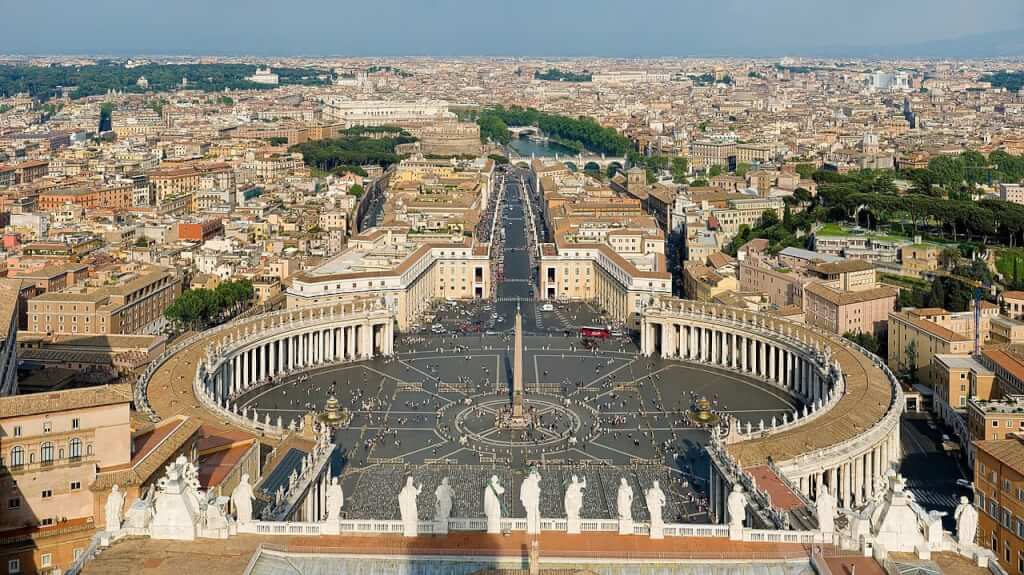
The Vatican Necropolis (Scavi)
The Vatican Necropolis, or Scavi, aren’t really part of the Vatican at all. Instead, they’re part of an Imperial Roman graveyard. When it was built, it was above ground beside the The Circus of Nero. It is precisely this geographical fact that links it to St. Peter.
Catholic tradition states that Peter was martyred in the Circus of Nero in either the year 64 or 67, specifically by crucifixion on an inverted cross, then perhaps buried in the closest cemetery. Emperor Constantine, Rome’s first Christian emperor, believed the cemetery was Peter’s final resting place so strongly that he built a basilica over the old site. This was the same basilica that Bramante essentially tore down to build the Basilica of St. Peter that we know today.
The necropolis was first excavated between 1940 and 1949 at the behest of Pope Pius XI, who wanted to be buried as close as possible to the remains of St Peter. Whether these excavations actually unearthed the saint’s tomb or not has been a matter of furious debate ever since, even within the Vatican.
Despite Pope Francis unveiling the supposed bone fragments of St. Peter for the first time in public in 2013, many sceptics remain. Not that they have hurt the popularity of the Scavi, a perennial favorite of religious pilgrims to Rome and lovers of the city’s rich architectural history. They are also a wonderfully uncrowded, if difficult to access attraction. Visits are only arranged by the Excavations Office and limited to only 250 visitors a day.
The Baldachin (Baldacchino)
Another proponent of the belief that St. Peter was buried under his eponymous basilica was the young sculptor Gian Lorenzo Bernini. At just 25 years old, Bernini was employed by Pope Urban VIII to mark the very spot in the building which the grave was supposed to lie beneath.
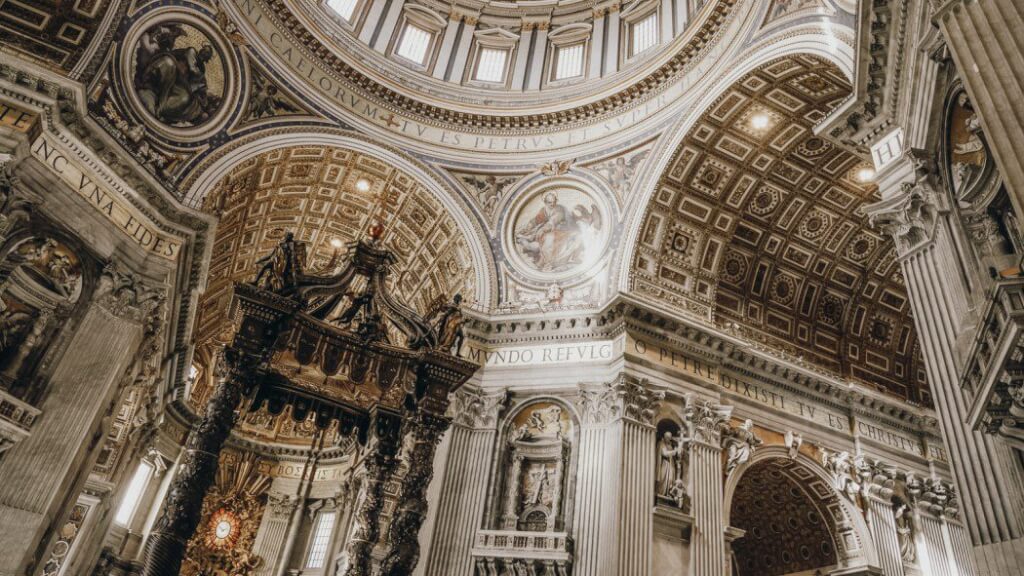
Bernini’s solution was to create the largest bronze sculpture ever made in the form of his magnificent Baldacchino. This hulking altar canopy is part sculpture, part architecture, and a thundering statement to the global power and (at the time) political strength of the Catholic Church.
In order to collect enough bronze to create it, Bernini had to literally strip the bronze claddings from the portico of the Pantheon. When you look at the sculpture today note the giant bees crawling up the columns. Where do they come from? They’re the family symbol of Maffeo Barberini, aka Pope Urban VIII.
The Pietá
Michelangelo’s Pietá is widely considered to be among the most moving and emotive sculptures in Western art. It depicts the Virgin Mary holding the dead body of her son, Jesus, after his crucifixion. Renowned for wringing tears from its onlookers, the statue is considered a masterpiece not only for its virtuosity of execution, but also its representation of Mary as a beautiful young woman, which was highly innovative when it was sculpted in 1499.
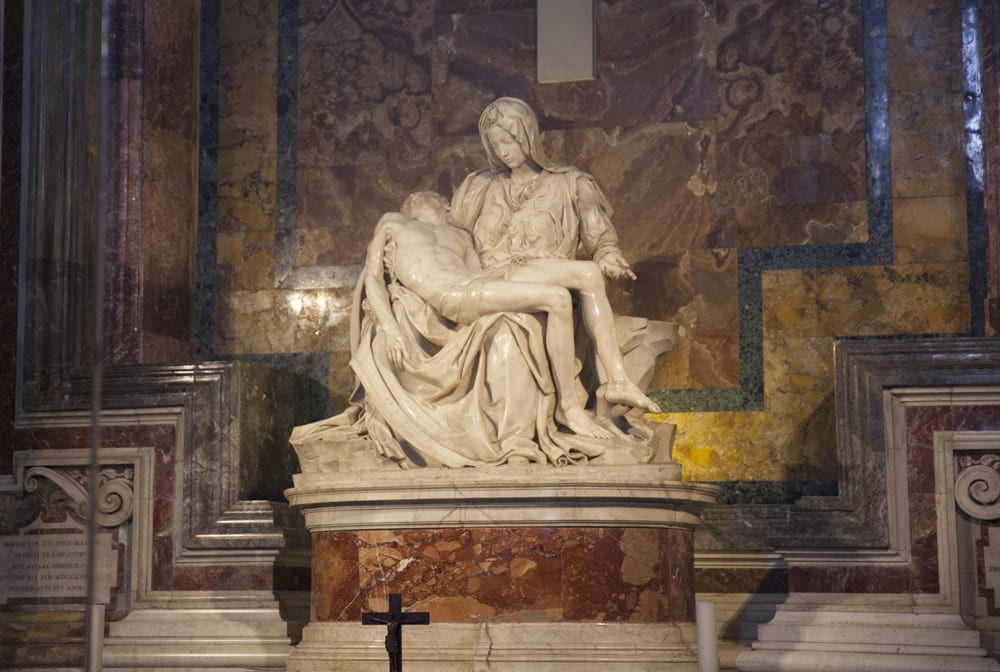
Since going on display Pietá has had a turbulent history, to say the least. It’s first defacer was Michelangelo himself, who (as the story goes) upon learning that visitors believed it to be the work of another sculptor, chiselled his name into the sash. It was the only one of his works that he would ever sign.
Next, some of Mary’s fingers were broken off in a move and had to be restored. In 1972 a deranged, hammer-wielding Australian, believing himself to be Christ reborn (and apparently not appreciating evidence to the contrary) knocked a few chunks out of the statue with hammer. Many of these were dutifully pocketed by passers-by and never returned. Through all of this, with the help of some immensely talented restorers, the Pietá has held on to its emotive essence and continues touch a deeply resonant chord with visitors to this day.
Tips For Visiting St. Peter’s Basilica

Opening Times
St. Peter’s Basilica is open every day from 7:00am to 7.00pm April to September and from 7:00am to 6:30pm October to March. Please check the website before your visit.
The dome is open from 7.30am to 5.00pm.
Rules
St. Peter’s Basilica is a holy place; appropriate attire must be worn by all who wish to enter. Both men and women should wear clothing that covers their shoulders and knees. Small bags and umbrellas are permitted inside but large bags have to be checked at the entrance, next to the official audio-guides desk.
Tickets
Entrance to the Basilica is free. The dome climb costs €8.00 to take the stairs or €10.00 to take the elevator (we recommend splurging on that extra 2 euro). A visit to the Necropolis will cost €13.00, and a lot of forethought/luck if you don’t got with a tour group.
Best Time to Visit
The line to get in St. Peter’s is probably the most notorious in Rome because there is no way to skip it. In high season (May – September) it can stretch over 2 hours. Even in the low season, the wait might reach an hour. The best way to avoid the long line is to show up early, when the doors open. Even in the height of summer, you can miss the worst of the line by simply getting an early start.
Getting There
The best way to reach St. Peter’s is by taxi or metro.
If traveling by taxi, make sure to specify to the driver that you are going to the entrance of the Basilica of St. Peter (Basilica Papale di San Pietro in Vaticano) NOT the Vatican Museums (Musei Vaticani), which is a 15-minute walk away.
If traveling by metro, take the Metro A line to the Ottaviano – S.Pietro-Musei Vaticani or the Cipro stations. From either stop it’s a 10-minute walk to St. Peters Basilica.
Update notice: This article was updated on October 8, 2024.
by Elena L.
View more by Elena ›Book a Tour

Pristine Sistine - The Chapel at its Best
€89
1794 reviews

Premium Colosseum Tour with Roman Forum Palatine Hill
€56
850 reviews

Pasta-Making Class: Cook, Dine Drink Wine with a Local Chef
€64
121 reviews

Crypts, Bones Catacombs: Underground Tour of Rome
€69
401 reviews

VIP Doge's Palace Secret Passages Tour
€79
18 reviews

Legendary Venice: St. Mark's Basilica, Terrace Doge's Palace
€69
286 reviews








